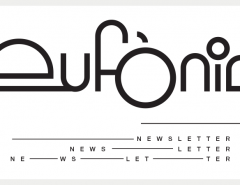Music and Morse Code
by Dmitri N. Smirnov
Music is a language, and therefore it can be translated into other languages. Of course, such a sort of translation may not prove absolutely perfect or correct, but it can help us to perceive music from a new, quite unusual point of view, and can give us insights into music and its structural elements. One of the main elements of music, rhythm, also represents one of the main constituents of “Morse code” telegraphy.
Morse code was developed by Samuel Morse and Alfred Vail in 1835, and is a system of representing letters, numbers and punctuation marks by means of a code signal sent intermittently.
Morse code is an early form of digital communication; however, unlike modern binary digital codes that use just two states (commonly represented as 1 and 0), it uses five: dot (·), dash (–), short gap (between each letter), medium gap (between words) and long gap (between sentences). If the duration of a dot is taken to be one unit then that of a dash is three units. The space between the components of one character is one unit; between characters is three units; and between words, seven units.
Fuente : imbecil





Leave a Reply
Lo siento, debes estar conectado para publicar un comentario.